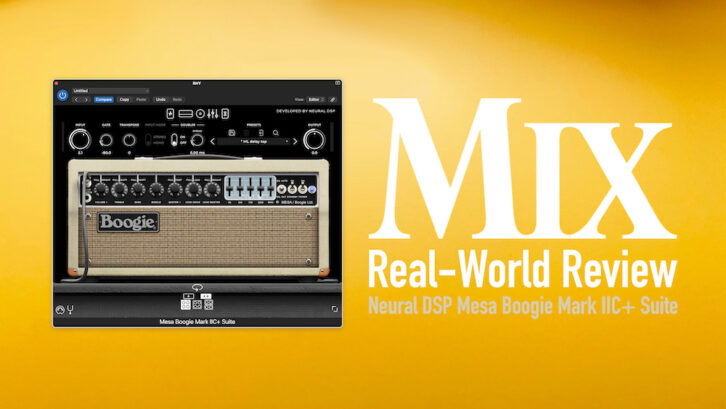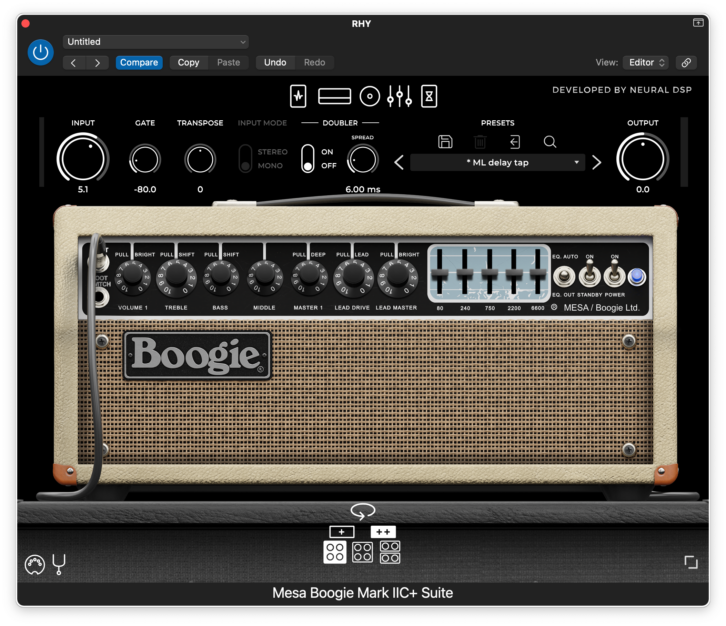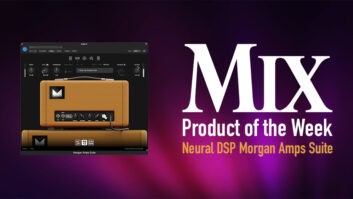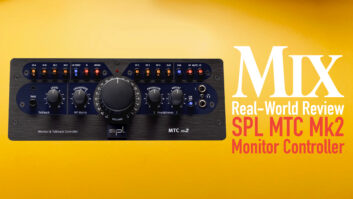
| MIX VERDICT: NEURAL DSP MESA BOOGIE MARK IIC+ SUITE |
| THE TAKEAWAY: “If you want an easy way to add the iconic sound of Mesa Boogie amps to your studio, you’ll love this software.” |
| COMPANY: Neural DSP • www.neuraldsp.com PRICE: $99 PROS: • Realistic models of Mesa Boogie Mark IIC+ and ++ amps. • Compressor, two Overdrives, Chorus, Reverb (hall and spring) and Delay effects. • Flexible cabinet section with many mic models and easy mic positioning. • Superb Doubler effect. • Standalone version includes metronome. • Good value. CONS: • Transpose effect has no mix control. |
Neural DSP offers a variety of amp-and-effects modeling software. Some of its products are rig emulations of well-known guitarists such as John Petrucci and Tom Morello, and others focus on individual amps such as the Tone King Imperial MKII or the Soldano SLO-100.
The company’s most recent release in the latter category is the Mesa Boogie Mark IIC+ Suite. The Mark IIC+ amp was made between 1978 and 1985 and was a favorite of guitarists such as Kirk Hammett and James Hetfield of Metallica, Steve Lukather of Toto, Neal Schon of Journey, John Petrucci of Dream Theater and Prince. The software also includes an emulation of the Mark IIC++, a rare modded version of the amp.
The signal chain starts with the Stompbox section. It contains four pedals: Compressor, Overdrive 1, Overdrive 2 and Chorus.
Next is the Amp section, where you can choose between the Mark IIC+ or IIC++ amp heads. The former is black colored and the latter blond. The IIC++ features a slightly brighter sound and has more gain.
In addition to Volume (gain) and Master Volume controls you also get Treble, Bass and Middle knobs. All the knobs are push/pull and feature secondary functions such as (mid) Shift, Bright, Deep and Lead. When Lead is turned on, it activates Lead Drive and Lead Master controls.
Cabinet-wise, you can switch between two different Mesa Boogie 4x12s and a 2×12. Those who prefer their own cabinet IRs can use the built-in IR Loader.

There are ten different mic models to choose from, and changing their positioning on the virtual cabinets is easy. You can pan each cabinet in the stereo field on mono-to-stereo and stereo instances of the plug-in (or in the standalone app).
Even more EQ is available via a separate 9-band Graphic EQ section after the Cabinet. The last stop on the signal chain is the Post FX section, which includes Delay and Reverb pedals. On stereo or mono-to-stereo instances of the plug-in, the Delay offers separate control of the left and right channels, including delay time, feedback, delay level and more.
The Reverb is an ’80s hall emulation. If you prefer spring reverb, you can turn that on with a knob that’s part of the Rear Panel controls, which are accessible with a push of a button. The Rear Panel also includes a Presence knob and a Class Switch for changing the operating mode from Simul-Class to Class A.
Like other Neural DSP modeling plug-ins, the Mark IIC+ Suite components sound incredibly realistic and provide a vast range of tones. As you would expect with Mesa Boogie amps, the high-gain realm offers the most variety, including everything from overdrive to massive distortion. You can also get some useful clean tones.
Antares Auto-Tune Pro X – A Mix Real-World Review
Global features in the plug-in and standalone versions include an excellent Doubler, a Tuner and a Transpose knob. The latter has no mix control, which limits its usefulness as an octave-divider effect. Still, it can be handy to have it available. Turning the Input Mode switch to Stereo allows you to use the plug-in with keyboards and other stereo sources.
Whether you use the standalone to practice or the plug-in to mix, the Mark IIC+ suite offers both quality and value. If you want an easy way to add the iconic sound of Mesa Boogie amps to your studio, you’ll love this software.







